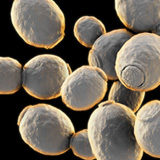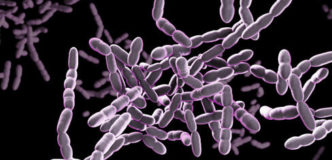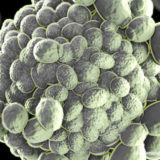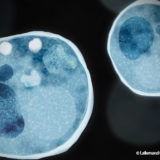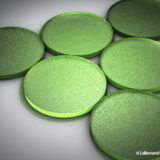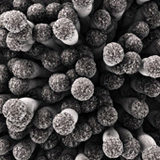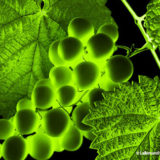| Alpha 1-Step™ |
Selected by IFV, France |
Oenococcus oeni |
Red Wine

White Wine

|
15.5 % |
> 3.2 |
Mouthfeel
Complexity
Fruity |
Safety Datasheet Technical Datasheet |
Uvaferm ALPHA™ was selected by the Institut Technique du Vin (ITV) in France from spontaneous malolactic fermentations showing good fermentation activity and sensory contribution. ALPHA™ is a dominant strain and has the capacity to achieve reliable MLF, even showing good resistance to botrycides. Contrary to spontaneous MLF, the contribution of ALPHA™ to white wine is usually described as enhancing the mouthfeel, while respecting the wine’s varietal character. The lower perception of green and vegetative flavors is the result of the very positive impact of ALPHA™ on wine complexity.
|
| Malotabs™ |
|
Oenococcus oeni |
Red Wine

White Wine

|
16 % |
>3.2 |
|
Safety Datasheet Technical Datasheet |
Selected wine bacteria for malolactic fermentation are now available in a tablet form. Malotabs™ is a specific Oenococcus oeni tablet developed for an easy and simple inoculation in barrels and an easy induction of malolactic fermentation. Easy-to-use and easy-to-add to barrels, Malotabs™ ensure a fast bacterial dissolution and dispersion, complete and homogeneous throughout the entire volume of the barrel. Developped in collaboration with Eurotab®
|
| ML Prime™ |
Selected by Università Cattolica del Sacro Cuore, Italy, |
Lactobacillus plantarum |
Red Wine

|
15.5 % |
3.4 |
|
Technical Datasheet |
ML Prime™ is a new concept of freeze-dried starter culture with a powerful Lactobacillus plantarum with very high malolactic activity and no risk of volatile acidity (VA) production. It has been developed with a new production process that optimizes the active bacterial culture. Its high malolactic enzyme activity strongly shortens the lag phase and can quickly degrade malic acid content up to 3 g/L. It is able to achieve a very fast malolactic fermentation before the growth of indigenous bacteria, often responsible for the VA increase or other wine defects in high pH conditions. Used in co-inoculation, it is perfectly suited to conduct MLF in classical red winemaking process using short or medium macerations or thermovinification process on the liquid phase. It is the perfect tool for winemakers for red vinification with low natural acidity and pH ? 3.4.
|
O-Mega®  |
Selected by Institut Français de la Vigne et du Vin, France |
Oenococcus oeni |
Red Wine

White Wine

Rosé Wine

|
16 % |
3.1 |
Freshness
Complexity |
Safety Datasheet Technical Datasheet |
O-Mega was isolated and selected in South of France by the Institut Français de la Vigne et du Vin (IFV) for its capacity to quickly achieve malolactic fermentation (MLF) in a wide range of applications. is a secure and efficient strain which tolerates low pH or high alcohol conditions with an easy protocol of use (MBR® process). Reliable on white, red and rosé wines,
complements fresh and fruit driven wines and helps to stabilize red wine color because of its slower degradation of acetaldehyde.
|
| PN4 1-Step® |
Selected by Institute of San Michele - Italy |
Oenococcus oeni |
Red Wine

White Wine

|
15.5 % |
>3.1 |
Spicy
Structure
Complexity |
Technical Datasheet |
The PN4™ bacteria was isolated from a spontaneous malolactic fermentation in a Pinot noir by the Institute of San Michele in Trentino, Italy. This bacteria demonstrates its capacity to achieve malolactic fermentation for red and white wines in difficult conditions of pH, alcohol and S02. Microvinification testing of the PN4™ on a laboratory scale has been confirmed at more than 30 Trentino wineries. The PN4™ bacteria is well suited for spicy and structured Pinot noir wines, and may also be used to carry out malolactic fermentation in Chardonnay.
|
| PN4™ |
Selected by Institute of San Michele - Italy |
Oenococcus oeni |
Red Wine

White Wine

|
15.5 % |
>3.1 |
Spicy
Structure
Complexity |
Safety Datasheet Technical Datasheet |
The PN4™ bacteria was isolated from a spontaneous malolactic fermentation in a Pinot noir by the Institute of San Michele in Trentino, Italy. This bacteria demonstrates its capacity to achieve malolactic fermentation for red and white wines in difficult conditions of pH, alcohol and S02. Microvinification testing of the PN4™ on a laboratory scale has been confirmed at more than 30 Trentino wineries. The PN4™ bacteria is well suited for spicy and structured Pinot noir wines, and may also be used to carry out malolactic fermentation in Chardonnay.
|
| VP41 1-Step™ |
Italian selection from the CRAFT project |
Oenococcus oeni |
Red Wine

White Wine

|
16 % |
>3.1 |
Fruity
Mouthfeel
Freshness |
Safety Datasheet Technical Datasheet |
|
| Lalvin 31™ |
Selected from IFV France |
Oenoccocus oeni |
Red Wine

White Wine

|
14 % |
> 3.10 |
Structure
Fruity
Freshness |
Safety Datasheet Technical Datasheet |
Lalvin 31™ (MBR®) was selected by the Institut Technique du Vin (ITV), France, and performs well under such stressful conditions as low pH (>3.1) or low temperature (>14°C/57°F). Final color intensity depends on the duration of malolactic fermentation (MLF). By being able to carry out MLF at low temperature, Lalvin 31® gives the winemaker control to obtain wine with higher color intensity and stability; Lalvin 31™is noted for its good sensory balance in red and white wines, and for low production of biogenic amines; Lalvin 31™ benefits from the addition of a alolactic nutrient such as Opti’Malo PLUS™.
|
| Lalvin VP41™ |
Italian selection from the CRAFT project |
Oenococcus oeni |
Red Wine

White Wine

|
16 % |
>3.2 |
Fruity
Mouthfeel
Freshness |
Safety Datasheet Technical Datasheet |
Lalvin VP41® was isolated in Italy during an extensive European Union collaboration to research natural Oenococcus oeni strains. Numerous wineries and enological institutes participated in this four-year effort to isolate, study and select malolactic bacteria with unique winemaking properties. The positive mouthfeel contribution of Lalvin VP41® stood out in tastings when compared to other ML bacteria strains. In temperatures below 16°C (61°F), Lalvin VP41® is a slow starter, but will complete fermentation. The very good implantation, high alcohol and SO2 tolerance, plus the steady fermentation kinetics of Lalvin VP41®, make it a very reliable malolactic fermentation culture to use when a significant impact on wine structure is desired.
|
| Uvaferm Alpha® MBR |
Selected by IFV, France |
Oenococcus oeni |
Red Wine

White Wine

|
15.5 % |
> 3.2 |
Mouthfeel
Complexity
Fruity |
Safety Datasheet Technical Datasheet |
Uvaferm ALPHA™ was selected by the Institut Technique du Vin (ITV) in France from spontaneous malolactic fermentations showing good fermentation activity and sensory contribution. ALPHA™ is a dominant strain and has the capacity to achieve reliable MLF, even showing good resistance to botrycides. Contrary to spontaneous MLF, the contribution of ALPHA™ to white wine is usually described as enhancing the mouthfeel, while respecting the wine’s varietal character. The lower perception of green and vegetative flavors is the result of the very positive impact of ALPHA™ on wine complexity.
|
| Uvaferm Beta™ |
Italian selection from the CRAFT project |
Oenococcus oeni |
Red Wine

White Wine

|
15 % |
>3.2 |
Fruity
Mouthfeel |
Safety Datasheet Technical Datasheet |
Uvaferm BETA™ was isolated in Italy and is best used to enhance tannin structure and red berry varietal character in reds. The name “Beta” comes from its capacity to increase levels of beta-damascenone and beta-ionone, which contribute floral notes, especially in Merlot. The strain is pH tolerant to 3.2, SO2 tolerant to 60 ppm, temperature tolerant to 14°C (57°F) and alcohol tolerant to 14.5%. BETA™ benefits from the addition of a malolactic nutrient, such as Acti-ML™.
|
